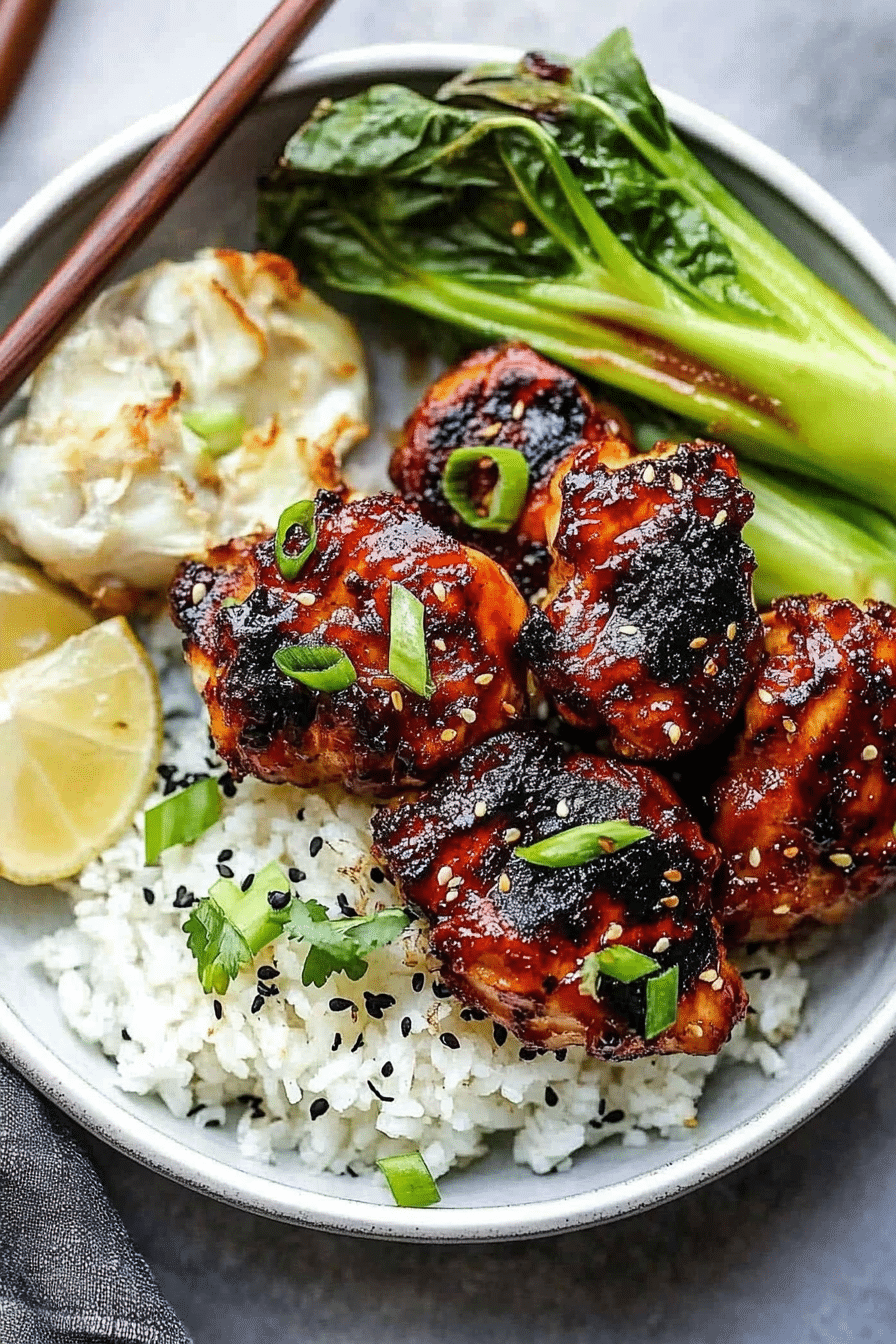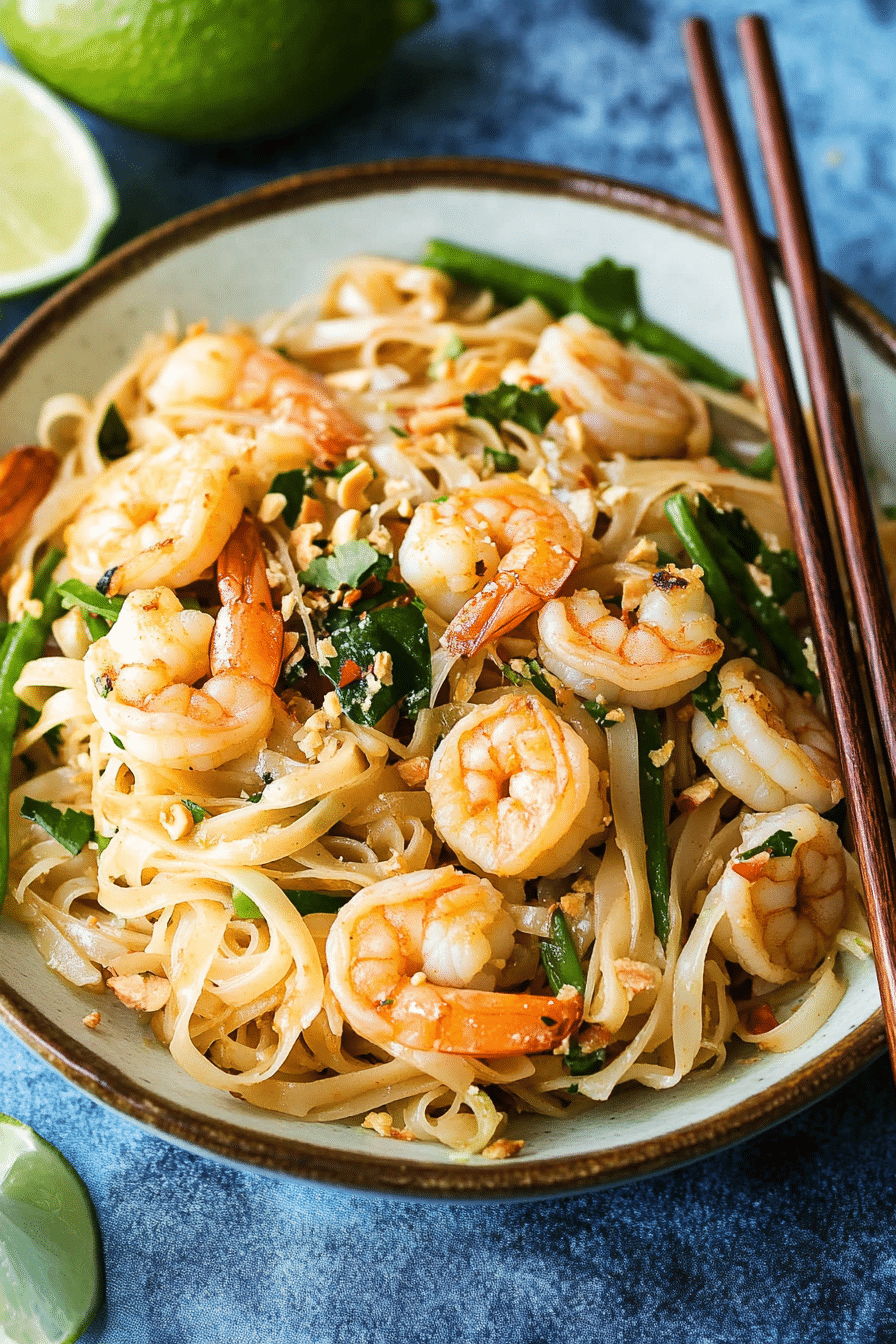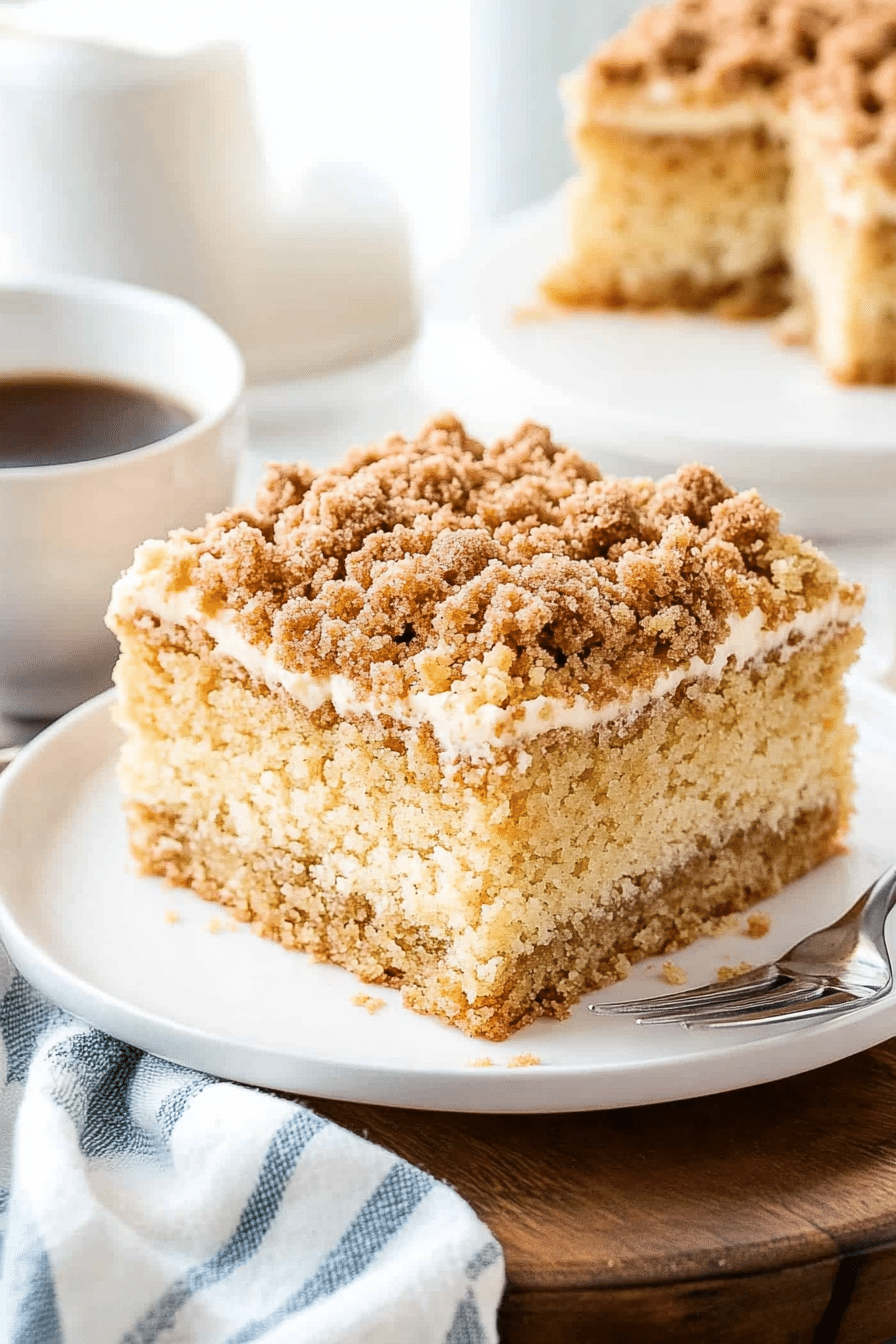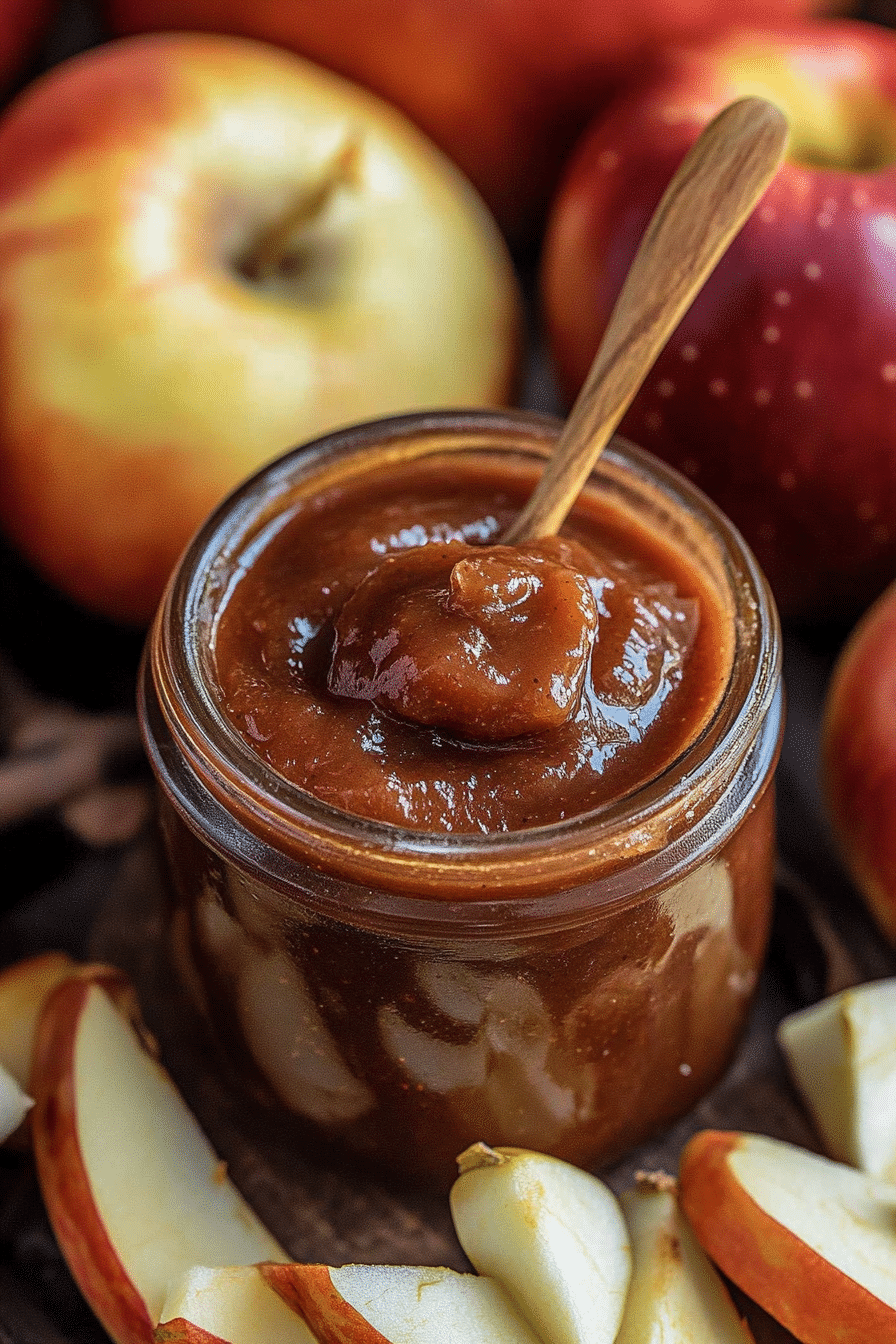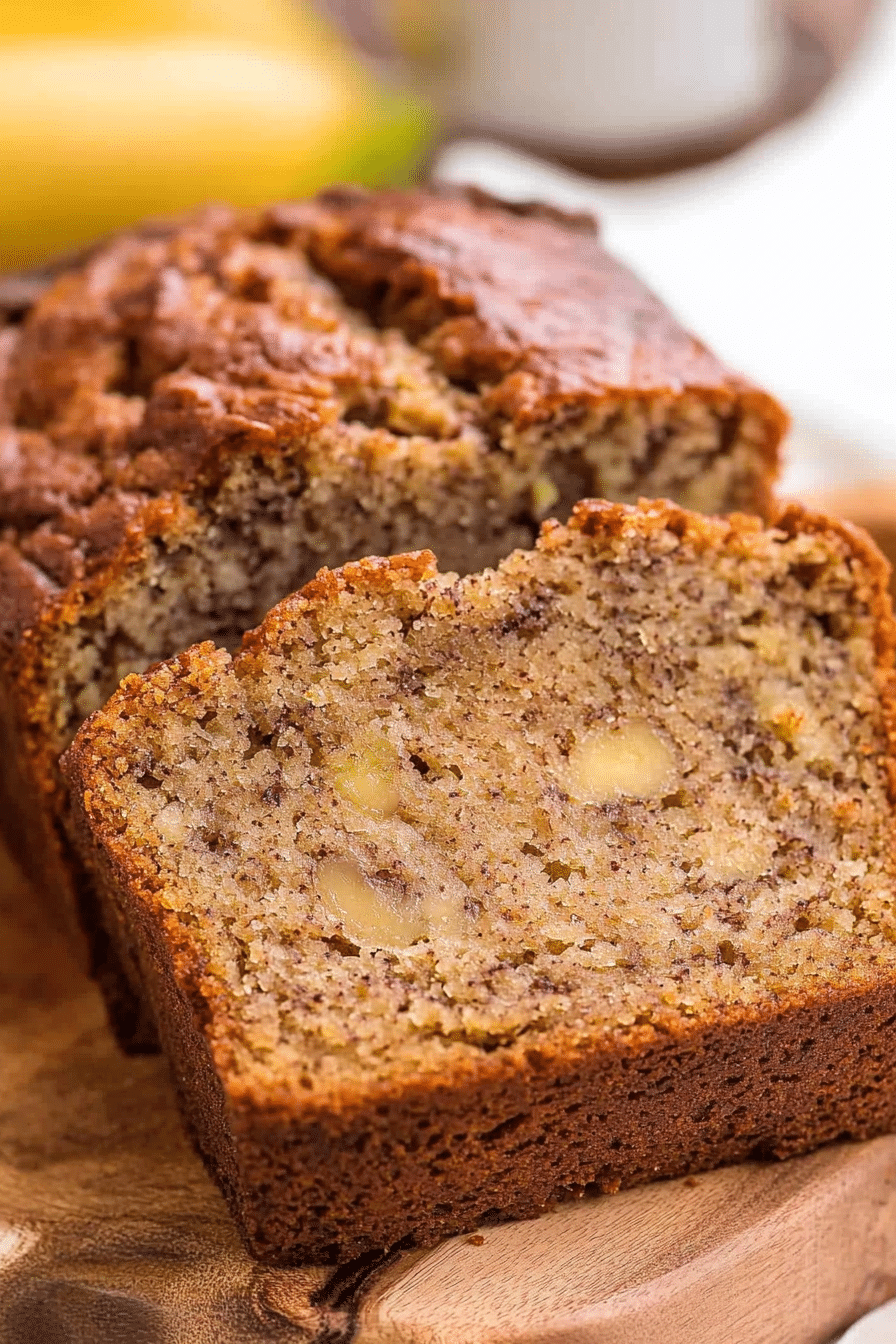Discovering the rich flavors of traditional Korean cuisine is a journey worth taking, and making Seolleongtang is an ideal way to start. This nourishing ox bone soup, known for its creamy, milky-white broth, is a beloved comfort food in Korean households. Seolleongtang’s simplicity and depth of flavor make it not just a specialty dish but a weekly staple in many Korean homes. With this recipe, you will not only learn How to cook Seolleongtang to perfection but also understand why it’s celebrated for its heartwarming qualities.
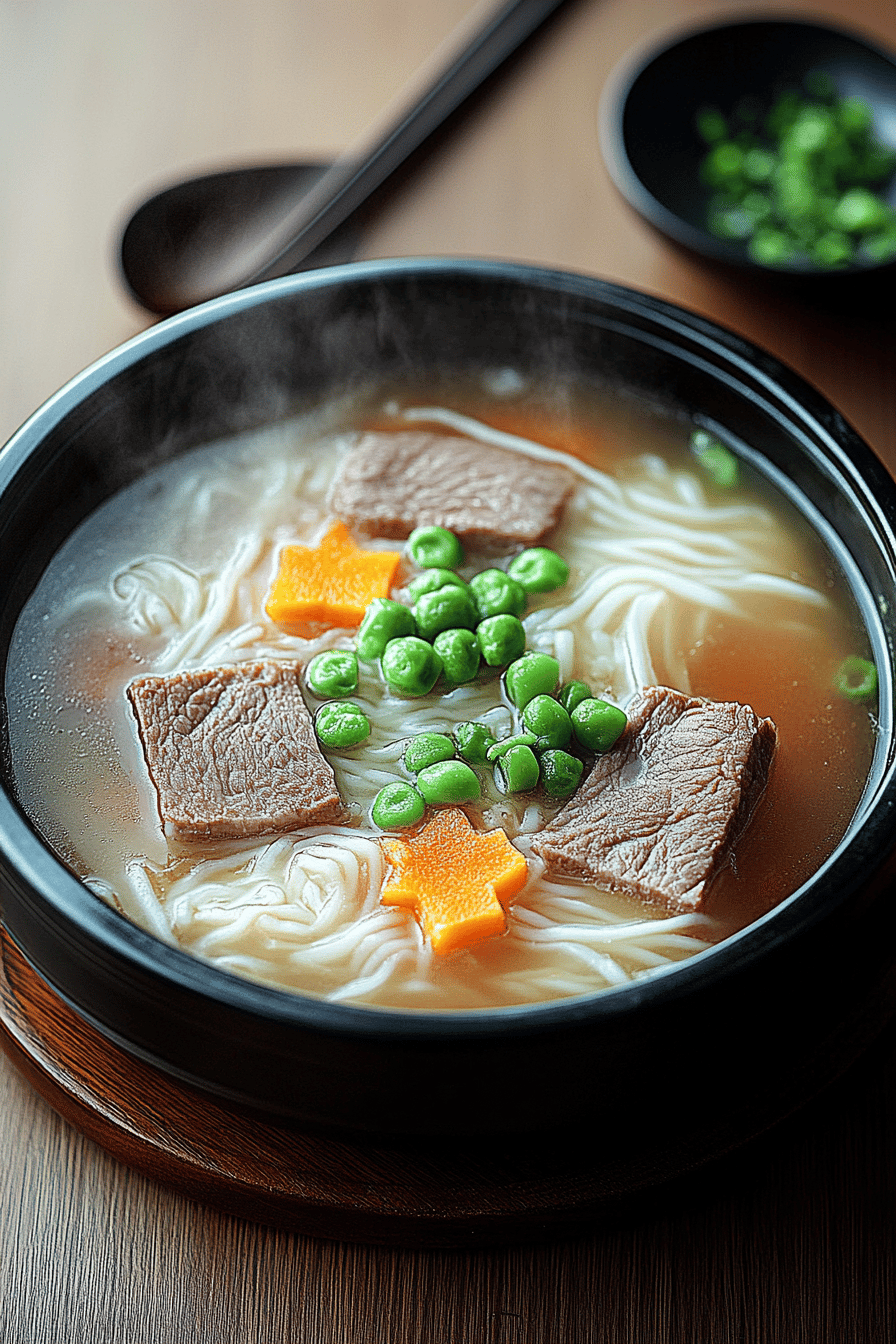
Every Sunday, my grandmother would start simmering ox bones at dawn to prepare our lunch. Her kitchen would fill with the aromatic allure of boiling beef, signaling a comforting meal ahead. I’ve carried forward this tradition with my own family. Tasting the first spoonful of Seolleongtang always brings a wave of nostalgia, reminding me of cozy family gatherings filled with laughter and love. The secret ingredient, she used to say, wasn’t in the bones or any seasoning—it was the intention to gather and share.
Why You’ll Love This Recipe
This Seolleongtang recipe is a true celebration of Korean culinary heritage. The magic of this dish lies in its simplicity and nutritional value. With every sip, you indulge in a multitude of health benefits, from collagen strengthening to nutrient-rich marrow. The slow-cooked broth emerges with a rich, creamy texture and a taste that whispers grace and comfort. Apart from being deeply satisfying, this versatile dish can easily fit into any dietary plan. It’s equally delightful when enjoyed alone or served as part of an elaborate Korean feast, making it an indispensable recipe in your repertoire.
Ingredients Notes
Authenticity begins with selecting the right ingredients. The star ingredient is beef bones—preferably leg bones with marrow—for a rich and gelatinous broth. Opt for organic or grass-fed beef if you desire a cleaner taste. You’ll also need brisket for added depth and texture, which can be substituted with shin if preferred. Don’t forget the seasonings; garlic, salt, and pepper are essentials. The soup’s neutrality allows the option of adding noodles or rice cakes for a heartier meal.
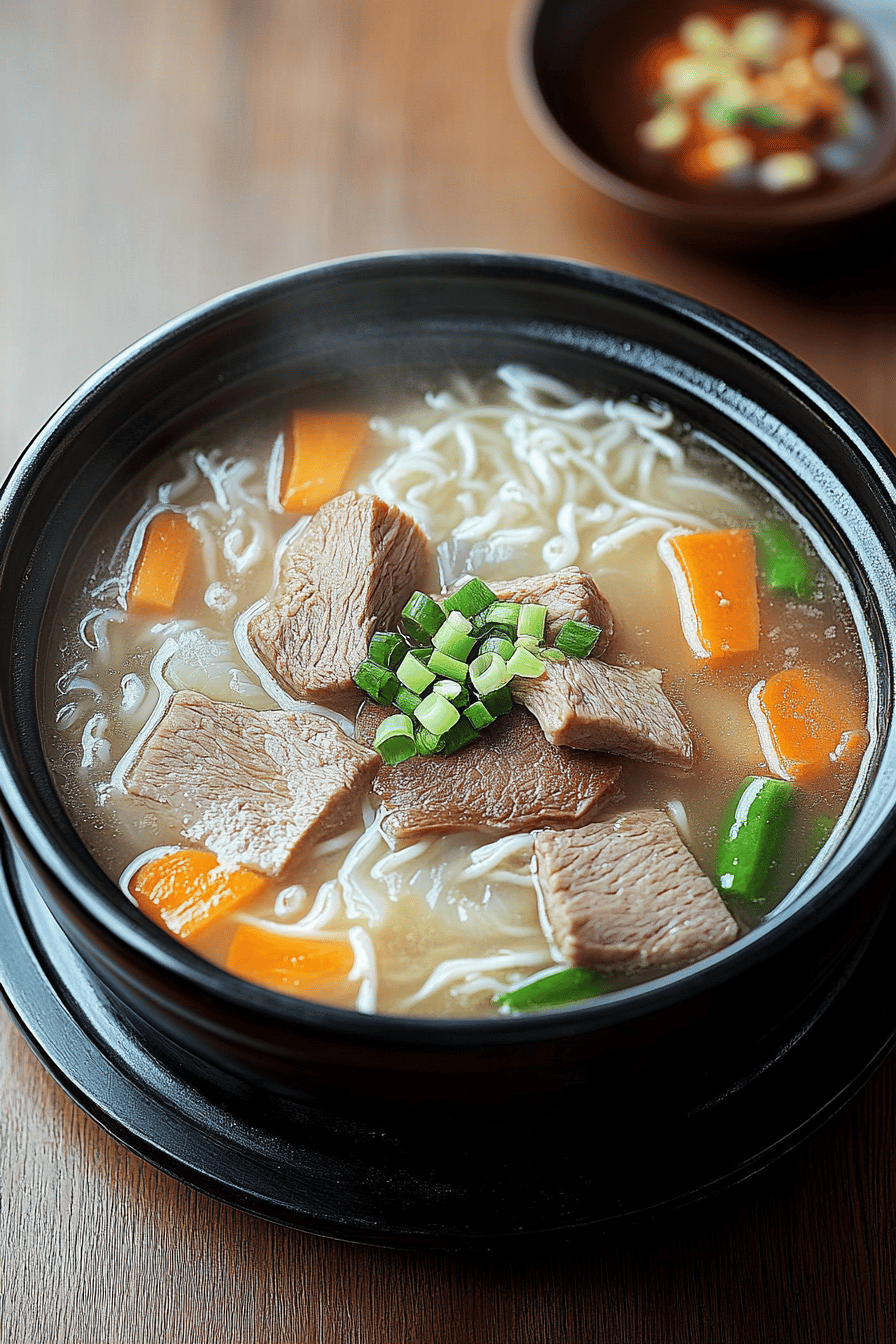
Recipe Steps
Step 1
Begin by thoroughly cleaning the beef bones. Rinse them under cold water to remove any residual blood. You can soak them in water for 30 minutes as an additional step to ensure clarity in the broth.
Step 2
Place the bones in a large pot, add water, and bring it to a rolling boil. After 10 minutes, drain and rinse the bones. This parboiling step is crucial to remove impurities that could cloud the broth.
Step 3
Return the bones to the pot with clean water, add the brisket, and slowly simmer for at least 6 hours. Make sure to skim any foam that rises to the top occasionally, ensuring a clarified and intense broth.
Step 4
Once the bones have fully extracted their flavor, remove them and the brisket from the pot. Slice the brisket thinly and set it aside. The longer the broth simmers, the better the flavor, if desired, continue cooking up to 12 hours.
Step 5
Season with garlic, and salt, and let the soup cool down. Skim off the solidified fat from the top before reheating the soup. Serve hot with sliced brisket, garnished with green onions, complemented by side dishes like kimchi for a wholesome experience.
Storage Options
Seolleongtang is as perfect for leftovers as it is fresh. Allow any remaining soup to cool to room temperature before transferring it to airtight containers. It stores well in the refrigerator for up to four days. For longer storage, ladle the broth and brisket into freezer-safe containers or heavy-duty freezer bags, leaving space for expansion, and freeze for up to three months. Reheat gently on the stovetop until thoroughly warmed, adding a splash of water if needed to reach the desired consistency.
Variations & Substitutions
Adjusting this recipe to suit dietary needs or preferences is simple. Replace brisket with tofu slices for a vegetarian variation while maintaining the rich essence with vegetable broth. For a low-sodium diet, substitute regular salt with kosher or sea salt and use minimal seasoning. Additions like mushrooms, cabbage, or a dash of soy sauce can also enhance flavor layers without overshadowing the traditional taste.
Serving Suggestions
Seolleongtang is best served piping hot, preferably in deep bowls that preserve the heat. Pair it with freshly cooked rice and an assortment of banchan (Korean side dishes) such as kimchi, pickled radishes, and seasoned spinach. Another exciting serving suggestion is offering Seolleongtang as a main course during winter gatherings, inviting guests to season their individual bowls with salt or green onions as desired.
Frequently Asked Questions
What bones are best for Seolleongtang? The key to authentic Seolleongtang is using beef leg bones with plenty of marrow, which impart richness and a creamy texture to the broth. Shin bones and knuckles are also excellent, adding a gelatinous quality that contributes to the soup’s signature mouthfeel.
Can Seolleongtang be made in advance? Absolutely! In fact, preparing Seolleongtang a day ahead allows for the flavors to develop even further. Simply cool the soup after cooking, store it in the refrigerator, and skim any solidified fat from the top before reheating. The soup maintains its integrity and taste, making it an ideal make-ahead meal.
Is it possible to Make Seolleongtang in a pressure cooker? Yes, you can significantly cut down on cooking time using a pressure cooker. Follow the same initial steps of parboiling and cleaning the bones. Then, cook under high pressure for approximately one and a half to two hours. Although the depth may slightly differ from slow simmering, you’ll still achieve a flavorful broth with convenience.

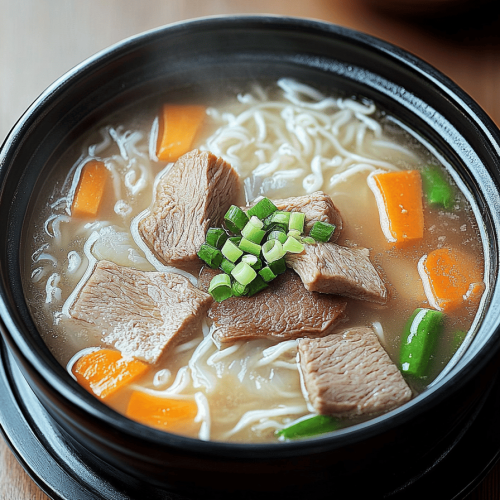
How to Make Seolleongtang: 7 Steps to Cozy Korean Comfort!
Ingredients
Main Ingredients
- 3 lb Beef bones (knuckle, leg, or shank)
- 1 lb Beef brisket
- 12 cups Water
- 2 cloves Garlic
- 1 slice Ginger
- 1 tbsp Salt or to taste
- 0.25 tsp Black pepper or to taste
For Serving
- 0.5 cup Cooked rice
- 0.25 cup Sliced scallions
- 0.25 cup Salted shrimp optional
- 0.25 cup Kimchi optional
Instructions
Preparation Steps
- Rinse the beef bones thoroughly under cold water. Soak them in a large pot filled with cold water for at least 30 minutes, or up to several hours, to draw out impurities. Change the water a few times during the soaking process.
- Drain the bones and place them in a large stockpot. Add the beef brisket, garlic, and ginger. Pour in 12 cups of fresh water.
- Bring the pot to a boil over high heat. Once boiling, reduce the heat to low, cover, and simmer for at least 4 hours, or up to 8 hours, skimming off any scum that rises to the surface periodically. The longer it simmers, the richer and more flavorful the broth will be.
- After simmering, remove the beef brisket from the pot and set aside to cool slightly. Strain the broth through a fine-mesh sieve lined with cheesecloth into a clean container. Discard the bones, garlic, and ginger.
- Once the brisket is cool enough to handle, slice it thinly against the grain.
- Return the strained broth to the pot and bring to a simmer. Season with salt and pepper to taste.
- To serve, place a portion of cooked rice in a bowl. Ladle the hot broth over the rice. Top with slices of beef brisket, scallions, salted shrimp (if using), and kimchi (if using). Serve immediately and enjoy!
Notes
Featured Comments
“Impressed! Clear steps and spot on results. Perfect for busy nights.”
“New favorite here — spot on. crowd-pleaser was spot on.”
“Super easy and turned out amazing! My family asked for seconds. Saving this one.”
“This sweet treat was absolutely loved — the silky really stands out. Thanks!”
“Made it tonight and wow — spot on! Will definitely make How to Make Seolleongtang: 7 Steps to Cozy Korean Comfort! again.”
“Packed with flavor and so simple. Exactly what I wanted from How to Make Seolleongtang: 7 Steps to Cozy Korean Comfort!.”



